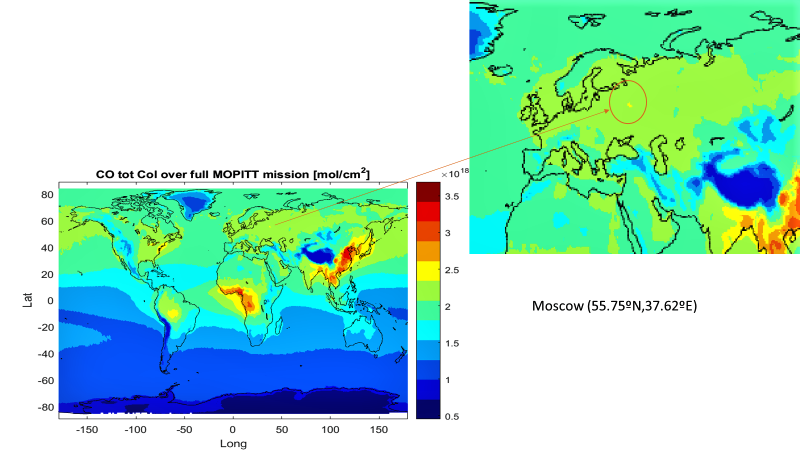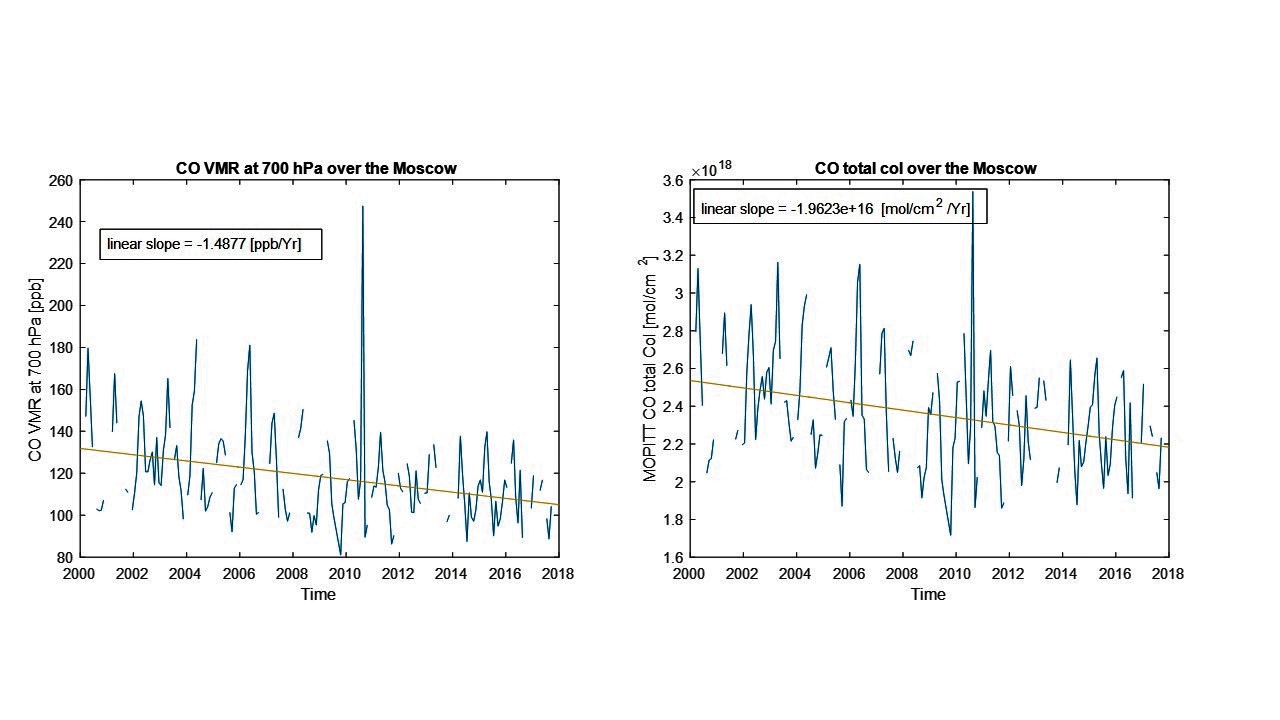
CO over megacities based on
MOPITT observations from space
In most towns and cities around
the world, the levels of carbon monoxide in air are below levels that are
hazardous for human health, but on larger urban areas, like some of capital
cities or high industrial zone, there is potential to have harmful levels of
carbon monoxide.
MOPITT can even detect smaller,
isolated emitting areas like individual cities [Pommier
2013], [Dekker 2017].
Using our 2018
version V7 (TIR, day observations), an average over full MOPITT mission of the
total CO column can clear detect without any sophisticated technique, a stable
local CO maximum over the Moscow cluster.

So, the bigest poluted city in the world seems to be indeed, a vergy large one: Moscow. Loking to the CO polution trend over the perod of our mission (see below, the total CO colum trend as well as thetrend of CO concentration at the 700 hPa level) we can observe a tendency similar to the global trend obseved by MOPITT as well as by other instruments (see here : Trends)

Pommier, M.,
C. A. McLinden, and M. Deeter, 2013: Relative changes in CO emissions over
megacities based on observations from space. Geophysical Research Letters,
40, 3766-3771, doi:10.1002/grl.50704.
Iris N.
Dekker, Sander Houweling, Ilse Aben, Thomas Röckmann, Maarten Krol1, Sara
Martínez-Alonso, Merritt N. Deeter4, and Helen M. Worden. Quantification of CO
emissions from the city of Madrid using MOPITT satellite retrievals and WRF
simulations. Atmos. Chem. Phys., 17, 14675–14694, 2017
https://doi.org/10.5194/acp-17-14675-2017,